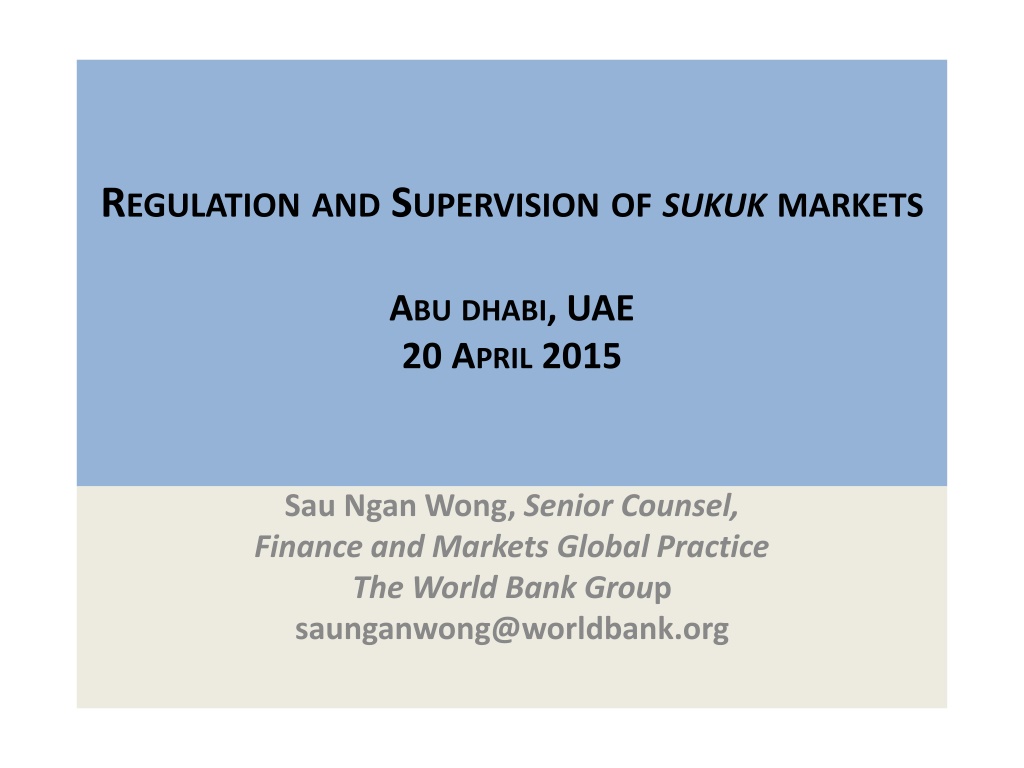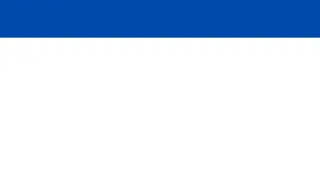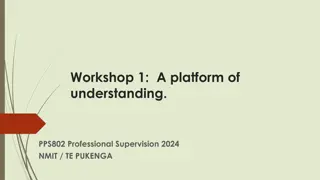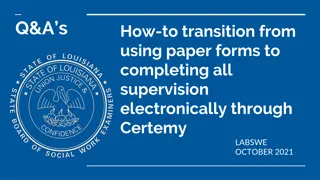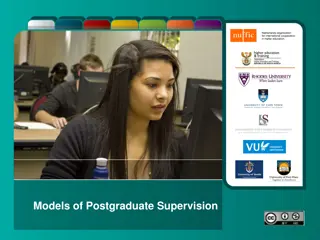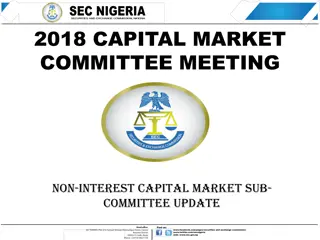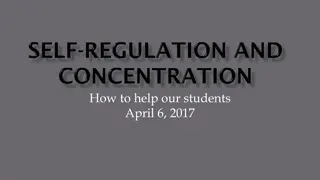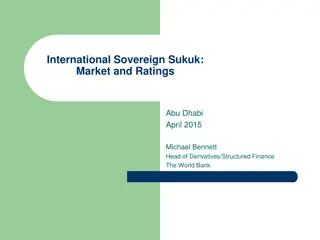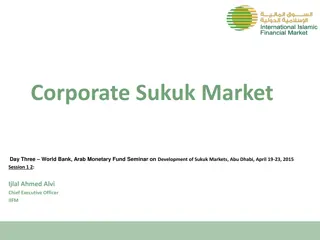REGULATION AND SUPERVISION OF SUKUK MARKETS
This content discusses the regulation and supervision of Sukuk markets in Abu Dhabi, UAE, covering topics such as the distinct features of Sukuk regulatory framework, relevant standards issued by IFSB, Shariah governance framework, and examples of country approaches to regulation of Sukuk. It emphasizes the importance of a sound regulatory framework for Islamic capital markets and the application of universal principles of securities regulation to Sukuk products.
Download Presentation

Please find below an Image/Link to download the presentation.
The content on the website is provided AS IS for your information and personal use only. It may not be sold, licensed, or shared on other websites without obtaining consent from the author.If you encounter any issues during the download, it is possible that the publisher has removed the file from their server.
You are allowed to download the files provided on this website for personal or commercial use, subject to the condition that they are used lawfully. All files are the property of their respective owners.
The content on the website is provided AS IS for your information and personal use only. It may not be sold, licensed, or shared on other websites without obtaining consent from the author.
E N D
Presentation Transcript
REGULATION AND SUPERVISION OF SUKUK MARKETS ABU DHABI, UAE 20 APRIL 2015 Sau Ngan Wong, Senior Counsel, Finance and Markets Global Practice The World Bank Group saunganwong@worldbank.org
Agenda - IOSCO report on Islamic capital markets - Distinct features of Sukuk regulatory framework - Relevant standards issued by IFSB on Sukuk - Shariah governance framework - Regulation of non-sovereign primary issuance of Sukuk - Regulation of secondary market of Sukuk - Examples of country approaches to regulation of Sukuk - Key challenges to regulation & supervision of Sukuk markets
IOSCO Islamic Capital Market (ICM) Taskforce Report 2004 Islamic Capital Market (ICM) constitutes a segment of the wider global securities market, the regulatory health and proper functioning of which falls within IOSCO s objectives A capital market with a sound regulatory framework and appropriate supporting infrastructure must first be present in order to nurture and support an ICM component While conventional principles of securities regulation may be applied to ICM, there may be, in certain instances, a need for more specific guidelines to be introduced to ensure that the unique aspects of ICM products are appropriately regulated There is no need to formulate separate regulatory principles for ICM. By extension, IOSCO s objectives and principles of securities regulation can be applied to ICM Reaffirmed in 2008 - Analysis of Application of IOSCO s Objectives and Principles of Securities Regulation for Islamic Securities Products 2008 3
Universal principles of securities regulation equally apply to ICM & Sukuk Products and services must be true to label Leverage on existing legal and regulatory infrastructure wherever possible Additional disclosures where necessary Opportunities for regulatory arbitrage must be minimized Trust in the system to be safeguarded Benchmark against international standards Standards of documentation Governance structures & practices Levels of transparency & disclosures Protection of Investors Ensuring markets are fair, efficient & transparent Reduction of systemic risks 4
Fair, efficient & transparent framework applicable to Sukuk markets... Investors Issuers Conducive regulatory framework that ensures: Fairness Investors protection Expeditious issuance process Efficiency Lower funding cost Ability to borrow long Market returns Liquidity Transparency Timely access to relevant information Clear and consistent rules 5
Distinct features of Sukukregulatory framework Governance principles peculiar to Islamic finance Fiduciary duties as Mudharib i.e. fund manager Shariah Governance Corporate Governance Unique risks e.g. Shariah risk, rate of return risk, Displaced commercial risk & equity investment risk Risk Management Capital Adequacy Standard Risk profiles & exposures determined based on underlying Shariah contracts Separate accounting, clearing and settlement system Separate prudential requirements liquidity, single customer limit Firewalls for Infrastructure Transparency and disclosures Dispute resolution mechanism Rate of return framework Consumer protection & fair dealing
Adapt existing sound practices to address Islamic Finance characteristics to minimize regulatory arbitrage Capitalize on strength of conventional regulatory system Gradual establishment of Islamic finance regulatory framework Conventional infrastructure already in place & proven effective regulatory Modify existing framework to address salient characteristics of Islamic finance Leverage framework to address similar risks in Islamic finance on existing Establish Shariah compliance & governance mechanism Adoption Islamic prudential standards issued by Islamic Financial Services Board - to addresses unique characteristics Islamic financial transactions of international Islamic governed by similar regulatory framework as in conventional banking finance/Sukuk are of Corporate governance Capital adequacy Liquidity management Financial discipline transparency & market Risk management and auditing
and streamlined with Islamic Financial Services Board (IFSB) standards for international regulatory harmonization Relevant Standards issued by IFSB to Sukuk Islamic Financial Services Board (IFSB) was established in 2002 Capital Adequacy Standard (Dec 2005) Guiding Principles on Risk Management (Dec 2005) Significant progress in addressing regulatory framework for Islamic financial institutions Guiding Principles on Corporate Governance ( Dec 2006) Transparency & Market Discipline (End- 2007) Promote international convergence of standards Supervisory Review Process (End-2007) Capital Adequacy Requirements for Sukuk, Securitization & Real Estate Investment (1/09) Provide platform for knowledge sharing Guiding Principles on Governance for Islamic Collective Investment Scheme (1/09) 191 members to date, including 54 regulators
Shariah Governance plays an important role in instilling & shaping sound governance practices . Ensures compliance with Shariah rules & principles Importance of Shariah governance Ensure strict Shariah-compliance Instill public confidence Fiduciary duties in Islamic banking transaction Shariah Governance Normal Corporate Governance Promote financial stability Principles of Islamic finance place great emphasis on strong corporate governance values & structure, transparency, disclosure of information & strict adherence to Shariah principles
An example of Shariah Governance Framework Model SHARIAH as overarching principle in Islamic finance Accountability Oversight BOARD RISK MANAGEMENT COMMITTEE BOARD AUDIT COMMITTEE BOARD SHARIAH COMMITTEE Overall oversight on Shariah governance structure & Shariah compliance Oversight accountability on Shariah related matters MANAGEMENT Support Support Ensure executions of business & operations are in accordance with Shariah principles Provide necessary support to the Shariah Committee Shariah Risk Management Control Function Shariah Review Function Shariah Research Function Shariah Audit Function Check & Balance Provide independent assessment & objective assurance designed to value add & improve IFI s compliance with Shariah Check & Balance Review business operations on regular basis to ensure Shariah compliance Conduct in-depth Shariah research prior to submission to the Shariah Committee Identify, measure, monitor, report & control Shariah non-compliance risk Shariah Compliance and Research Functions
Proper Sequencing of Regulatory Policies The 5 Pillars Establish reliable and efficient benchmark yield curve Improve liquidity in the secondary market Widen issuer and investor base Facilitate introduction of risk management instruments Introduce efficient & facilitative issuance process for Sukuk 11
Regulation of primary issuance of non-Sovereign Sukuk Regulation of primary issuance mechanism Public offer most stringent regulation via prospectus & other disclosures Private placement Hybrid offering Conditions for exemption from public offering disclosure requirements Distinction between retail and professional investors Definition of a professional investor Different approaches to levels of regulatory approval depending on whether exempt market or not classification of types of investors 12
Regulation of secondary market trading of Sukuk Transferability of Sukuk instruments & conditions for trading Distinction between retail and professional investors, if different from primary issuance Restrictions on transfer of non-listed or non-public Sukuk Relevant listing requirements for Sukuk on the stock exchange Access to pre-trade and post-trade information Ongoing disclosures Investment framework for pension funds, NBFIs etc Suitability test for different categories of investors 13
Different country approaches to regulation & supervision of Sukuk International experience points to two approaches some examples: Minimal alterations: United Kingdom, Singapore Parallel approach: Malaysia, Bahrain and Oman 14
Country approach in regulating & supervising Sukuk markets: Malaysia Ensure base-line application of rules governing disclosure, investor protection, fair and orderly market Introduce legislative changes to remove impediments and to provide certainty Issue legally binding guidelines, rulings and requirements where necessary to cover Product regulation Intermediation services Shariah governance Adopt market-based approach by requiring disclosure rather than merit assessment relating to product offerings Remove tax impediments (to achieve level playing field) and introduce temporary incentives where appropriate 15
Country approach in regulating & supervising Sukuk markets: Malaysia Ensure base-line application of rules governing disclosure, investor protection, fair and orderly market Introduce legislative changes to remove impediments and to provide certainty Issue legally binding guidelines, rulings and requirements where necessary to cover Product regulation Intermediation services Shariah governance Adopt market-based approach by requiring disclosure rather than merit assessment relating to product offerings Remove tax impediments (to achieve level playing field) and introduce temporary incentives where appropriate 16
Malaysia: 2 Tier Approach to regulation of ICM/Sukuk products ensure investors receive same degree of clarity, certainty & protection 1: General Regulatory Requirements 2: Shariah-specific Requirements Applicable to both conventional & Islamic products Applicable to Islamic products & Sukuk Prospectus Approved Shariah principles Trust Deeds Eligible Issuers Shariah Adviser Mandatory rating Utilization of proceeds 17
Two-tier Shariah assurance supported by Shariah governance structure Proper governance provides assurance on Shariah compliance & confidence on IF operation: Shariah as overarching principle in Islamic finance 1. SAC s legislative stature ashighest authority for Shariah matters in Islamic finance is accorded under the Central Banking Act. Shariah Advisory Council (SAC) 2. Shariah committee of IFIs are fully accountable on decision, views & opinions related to shariah matters Shariah Committee Management Board 3. Board & senior management with sufficient expertise & capability in dealing with issues specific to Islamic financial transactions Shariah Compliance Functions : 4. Emphasise the function of Shariah review & Shariah audit to provide check & balance 5. Shariah Committee member of another IFI within the same industry shall not be appointed avoid conflict of interest& maintain info confidentiality Shariah Review Shariah Audit 6. Institutionalise mutual respect by recognising differences of Shariah interpretations in various jurisdiction Shariah Governance Framework Shariah Parameters 7. Shariah parameters provide guidance on main features, principles & rulings of Shariah contracts Shariah Resolutions & Rulings
Key Challenges to regulation & supervision of ICM/Sukuk Bringing regulatory framework and oversight in line with international best practices Rebalancing tax treatment Strengthening insolvency frameworks Promoting standardization Ensuring adequate liquidity for long term financing Establishing sound risk-management practices 19
Rebalancing tax treatment Conventional debt often receives advantageous tax treatment (encouraging leverage), while some Islamic finance products face double taxation. Examples of Malaysia and Thailand took steps to ensure that Islamic financial transactions operate on a level playing field: In Malaysia, this principle has extended to ensuring that profits, asset transfers, and expatriation of profits by foreigners are treated equally, whether occurring under conventional or Islamic financial contracts. In Thailand, a package of proposed tax changes for Sukuk issuances is making its way through the legislative process to address the main hurdles faced by Sukuk issuers. 20
Promoting standardization Lack of standardization and cohesion, especially in Sukuk products, hinders the growth potential of Islamic finance The industry would benefit from more widely accepted benchmarks and indices. Innovation and knowledge sharing between various market players are essential to facilitate the standardization and unification of global markets for Islamic financial products. 21
Need to strengthen insolvency frameworks More work is needed to ensure convergence between best insolvency practices on the conventional and Shariah-compliant sides. The need to establish reliable mechanisms for dealing with Sukuk defaults, and addressing adverse outcomes, with special adaptations for risk sharing. Setting up these mechanisms requires the specification of parties rights under Shariah-compliant finance, especially in the case of cross-border transactions. 22
THANK YOU saunganwong@worldbank.org 23
THANK YOU Sau Ngan Wong, Senior Counsel, Finance and Markets Global Practice The World Bank Group saunganwong@worldbank.org
II. Capital adequacy B RWA 6 : Sukuk Suk k is certificates that represent the holder s proportionate ownership in an undivided part of an underlying asset where the holder assumes all rights and obligations to such asset ultimate customer. Externally RatedSuk k Applicable risk weight will be based on the ECAI ratings in accordance with the Standardised Approach Non Rated Suk k Applicable risk weight will be based on the underlying contract or on that of the issuer if there is recourse to the issuer Islamic Finance Summer Course - Kazakhstan 25
II. Capital adequacy B RWA 6 : Sukuk Suk k is certificates that represent the holder s proportionate ownership in an undivided part of an underlying asset where the holder assumes all rights and obligations to such asset ultimate customer. Externally RatedSuk k Applicable risk weight will be based on the ECAI ratings in accordance with the Standardised Approach Non Rated Suk k Applicable risk weight will be based on the underlying contract or on that of the issuer if there is recourse to the issuer Islamic Finance Summer Course - Kazakhstan 26
II. Capital adequacy B RWA 5 : Mudharabah Mu rabah Investment in Project Finance Prior to certification where funds are already advanced by the IIFS to the Mu rib : - Risk weight is based on the rating of either the ultimate customer or the Mu rib - Otherwise, 400% RW is applied to unrated Mu rib. After certification where amount receivable by the IIFS from the Mu ribin respect of progress payment due to the Mu ribfrom the ultimate customer: - Risk weight is based on the credit standing of the ultimate customer on the amounts receivable by the IIFS from the Mu rib Otherwise, 100% RW for unrated ultimate customer. - Islamic Finance Summer Course - Kazakhstan 27
II. Capital adequacy B RWA 5 : Mudharabah Private commercial enterprise to undertake a business venture (other than (1)) Simple risk-weight method: The RW shall be applied to the exposures (net of specific provisions) based on equity exposures in the banking book. The RW under the simple risk- weight method for equity position risk in respect of an equity exposure in a business venture shall entail a 400% for shares that are not publicly traded. i. However, funds invested on a Mu rabahbasis may be subject to withdrawal by the investor at short notice, and in that case may be considered as being as liquid as shares that are publicly traded. The applicable RW in such a case is 300%. ii. Slotting Method expertise. Islamic Finance Summer Course - Kazakhstan 28
II. Capital adequacy B RWA 5 : Musharakah 1. Private commercial enterprise to undertake trading activities in the foreign exchange, share and/or commodity - The RW of a Mush rakah that invests in quoted shares shall be measured according to the equity position risk approach where positions in assets tradable in markets will qualify for treatment as equity position risk in the trading book, which would incur a total capital charge of 16% (equivalent to 200% RW). - The capital charge can be reduced to 12% (equivalent to 150% RW) for a portfolio that is both liquid and well-diversified, subject to meeting the criteria as determined by the supervisory authorities Islamic Finance Summer Course - Kazakhstan 29
